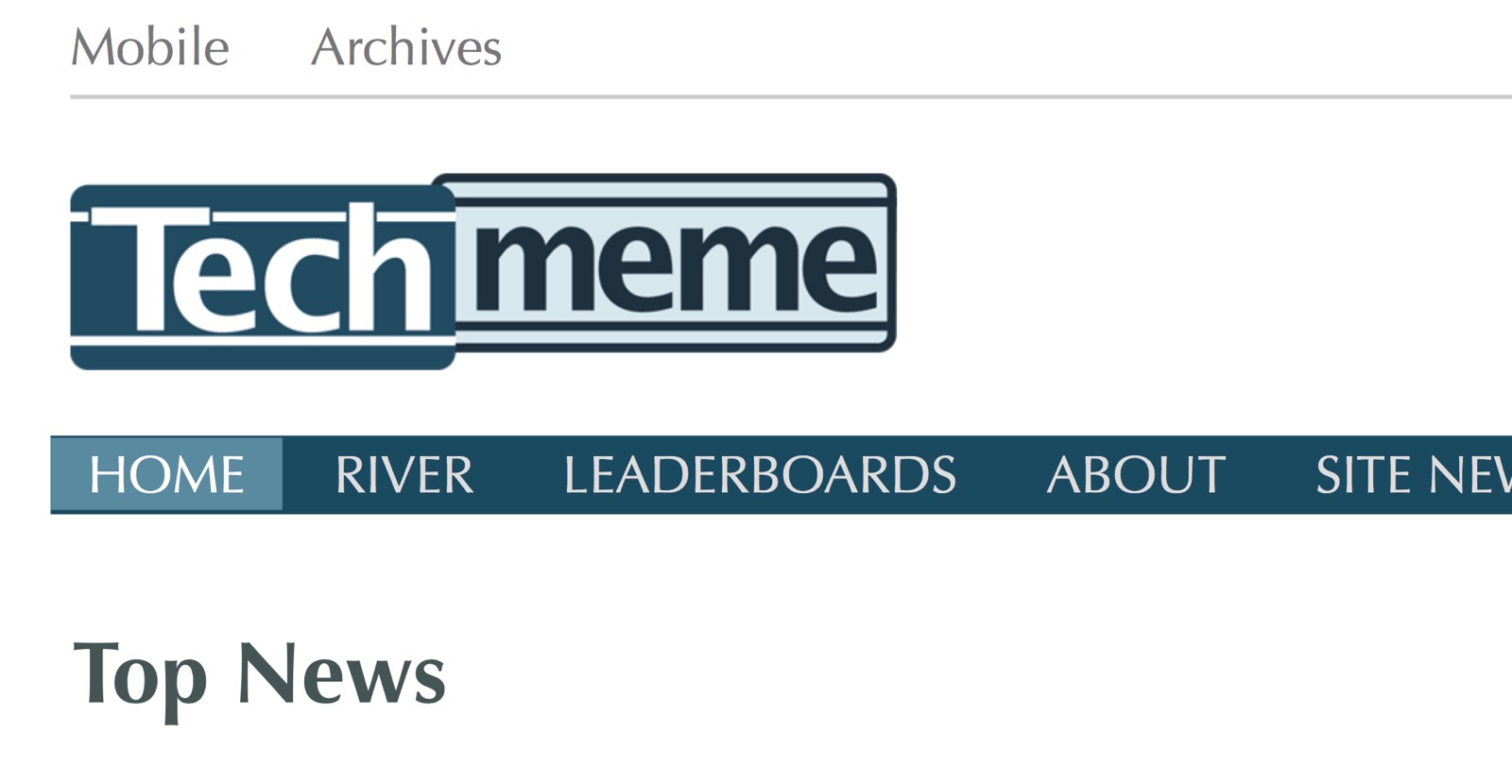Techmeme, and the opportunity in connecting the conversation


Has our lust for innovation made us move on from ideas too quickly? I’ve been mulling that over for most of the day, since I read Charlie Wurzel’s long piece on Gabe Rivera and Techmeme. Unless you’re a blogger of a certain vintage, you’re probably thinking “who?” right now. And that’s fine – he runs a niche site, but a hugely influential niche site:
Mark Zuckerberg and Sundar Pichai are both confessed readers, as are LinkedIn’s Jeff Weiner, former PayPal exec and current Facebook Messenger head David Marcus, former Twitter CEO Dick Costolo, and Microsoft’s Satya Nadella. Hunter Walk, a former product manager at YouTube turned seed-stage venture capitalist, told me he checks the site three to five times daily. “It’s one of my first morning sites,” he told me over email. “My perception is that lots of us [in Silicon Valley] use it.”
Techmeme is that most-old fashioned of digital things, an aggregator. It makes editorial decisions with algorithmic support over what the most important stories of the day are – and then links to all the discussion around that core story. That combination – of ranking and connection – is utterly compelling and all too little replicated anywhere else.
There are many people trying to find ways of surfacing the “best” or “most important” stories of the day – usually through algorithms, although I still favour the human-curated element through either newsletters or (whisper it) blogs. In many ways, it’s the second element of Techmeme – that’s so interesting – connecting together the conversations.
Conversational connectivity

In digital content circle, we talk a lot about “content atomisation”, the idea that the publishing packages of the past have been atomised into individual articles found via search or social. In a sense, what Techmeme does is reconnect those atoms into molecules of news, allowing you to track not just the most popular articles, but to explore the interconnections between them and other articles, which respond to them or follow them up. Thos connections both inform the ratings, but also guide to the reader into the broader context of the story.
It’s such a compelling idea that I’m surprised that nobody is really working on it in any other way. A decade back, the blog platform makers were really interested in connecting up conversations online. That led to the advent of standards like Trackback and Pingback, both of which got steadily buried under ever-increasing volumes of spam. And, to add to the woes, much of the discussion around any single article is now buried away in private spaces like Facebook.
But still, it seems a strange gap in the technology of the web that it’s surprisingly hard for the casual reader to easily find responses and follow-ups to something they’ve read.
And, it seems to me, that such a system might be a very handy tool in the war on intentionally misleading news.





